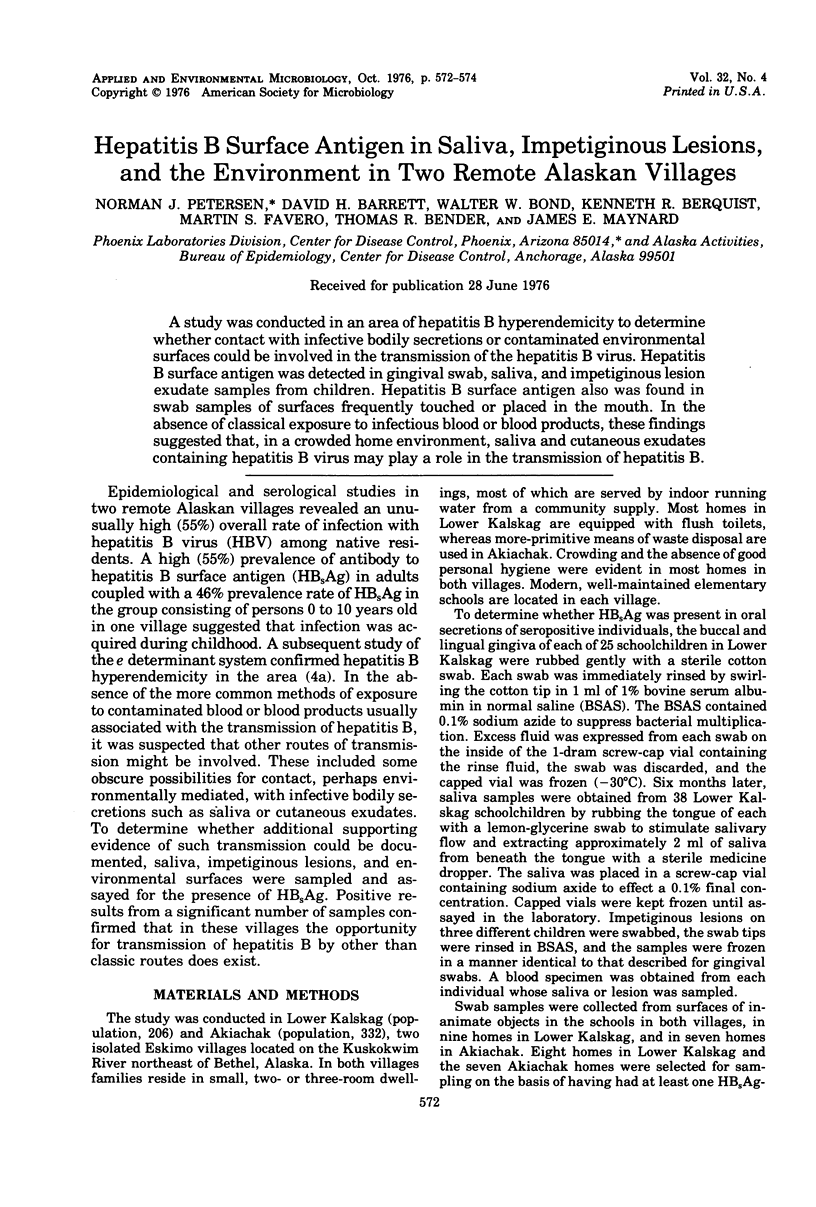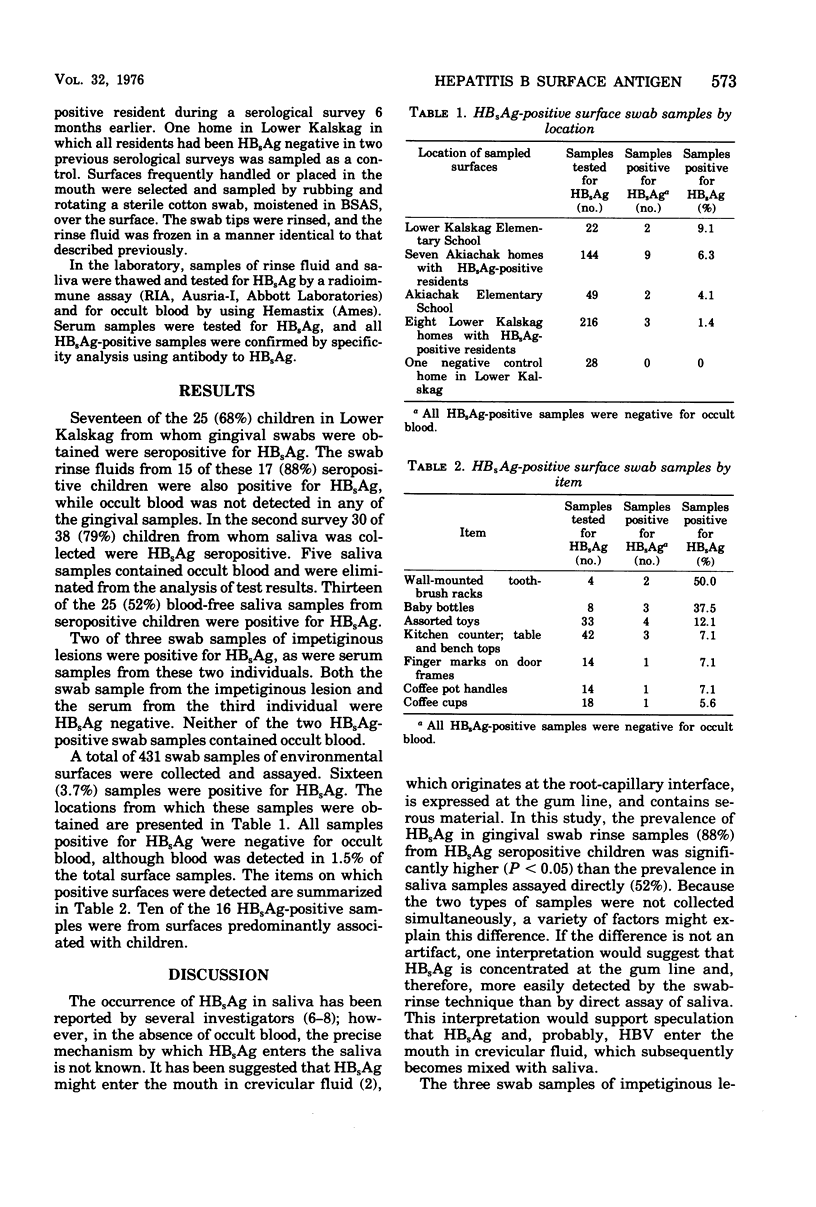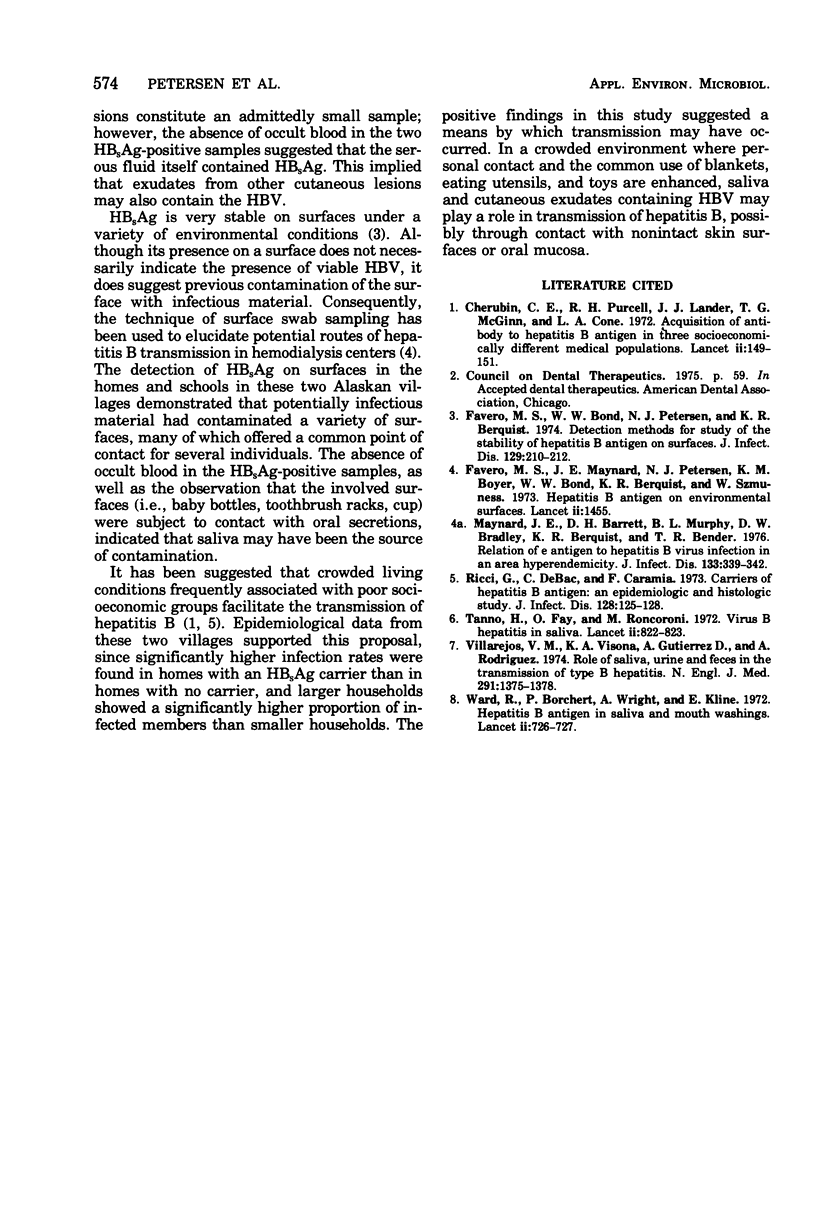Abstract
A study was conducted in an area of hepatitis B hyperendemicity to determin whether contact with infective bodily secretions or contaminated environmental surfaces could be involved in the transmission of the hepatitis B virus. Hepatitis B surface antigen was detected in gingival swab, saliva, and impetiginous lesion exudate samples from children. Hepatitis B surface antigen also was found in swab samples of surfaces frequently touched or placed in the mouth. In the absence of classical exposure to infectious blood or blood products, these findings suggested that, in a crowded home environment, saliva and cutaneous exudates containing hepatitis B virus may play a role in the transmission of hepatitis B.
Full text
PDF


Selected References
These references are in PubMed. This may not be the complete list of references from this article.
- Cherubin C. E., Purcell R. H., Lander J. J., McGinn T. G., Cone L. A. Acquisition of antibody to hepatitis B antigen in three socioeconomically different medical populations. Lancet. 1972 Jul 22;2(7769):149–151. doi: 10.1016/s0140-6736(72)91325-6. [DOI] [PubMed] [Google Scholar]
- Favero M. S., Bond W. W., Petersen N. J., Berquist K. R., Maynard J. E. Detection methods for study of the stability of hepatitis B antigen on surfaces. J Infect Dis. 1974 Feb;129(2):210–212. doi: 10.1093/infdis/129.2.210. [DOI] [PubMed] [Google Scholar]
- Favero M. S., Maynard J. E., Petersen N. J., Boyer K. M., Bond W. W., Berquist K. R., Szmuness W. Letter: Hepatitis-B antigen on environmental surfaces. Lancet. 1973 Dec 22;2(7843):1455–1455. doi: 10.1016/s0140-6736(73)92860-2. [DOI] [PubMed] [Google Scholar]
- Maynard J. E., Barrett D. H., Murphy B. L., Bradley D. W., Berquist K. R., Bender T. R. Relation of e antigen to hepatitis B virus infection in an area of hyperendemicity. J Infect Dis. 1976 Mar;133(3):339–342. doi: 10.1093/infdis/133.3.339. [DOI] [PubMed] [Google Scholar]
- Ricci G., De Bac C., Caramia F. Carriers of hepatitis B antigen: an epidemiologic and histologic study. J Infect Dis. 1973 Jul;128(1):125–128. doi: 10.1093/infdis/128.1.125. [DOI] [PubMed] [Google Scholar]
- Tanno G., Fay O., Roncoroni M. Virus-B hepatitis in saliva. Lancet. 1972 Oct 14;2(7781):822–823. doi: 10.1016/s0140-6736(72)92181-2. [DOI] [PubMed] [Google Scholar]
- Villarejos V. M., Visoná K. A., Gutiérrez A., Rodríguez A. Role of saliva, urine and feces in the transmission of type B hepatitis. N Engl J Med. 1974 Dec 26;291(26):1375–1378. doi: 10.1056/NEJM197412262912602. [DOI] [PubMed] [Google Scholar]
- Ward R., Borchert P., Wright A., Kline E. Hepatitis B antigen in saliva and mouth washings. Lancet. 1972 Oct 7;2(7780):726–727. doi: 10.1016/s0140-6736(72)92021-1. [DOI] [PubMed] [Google Scholar]


